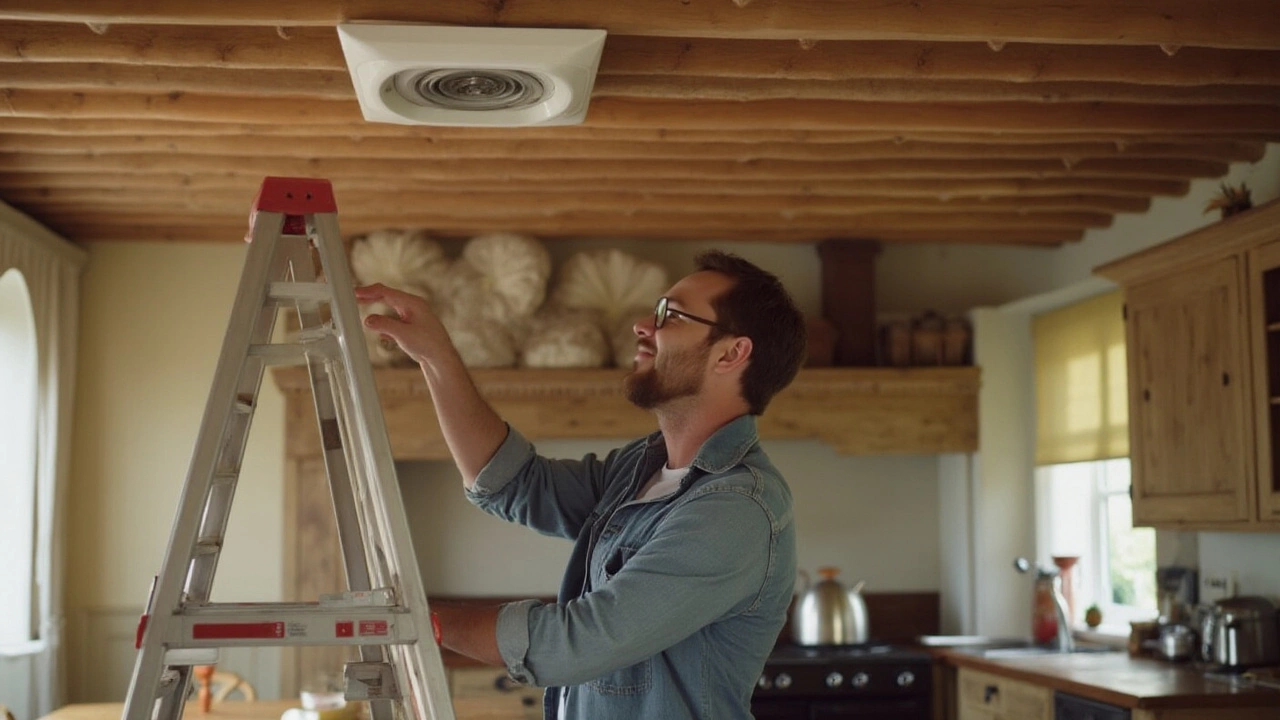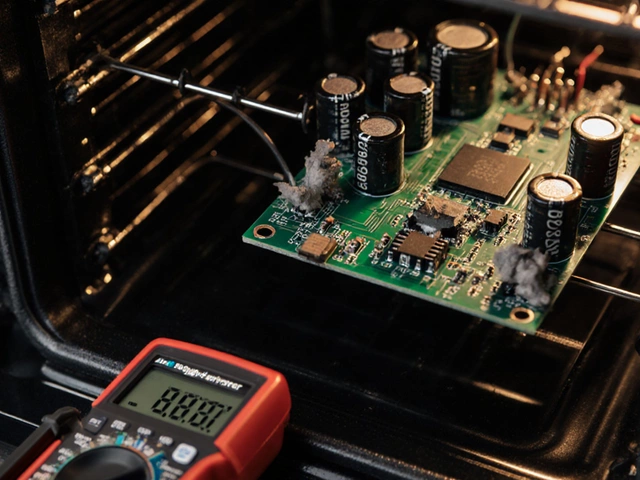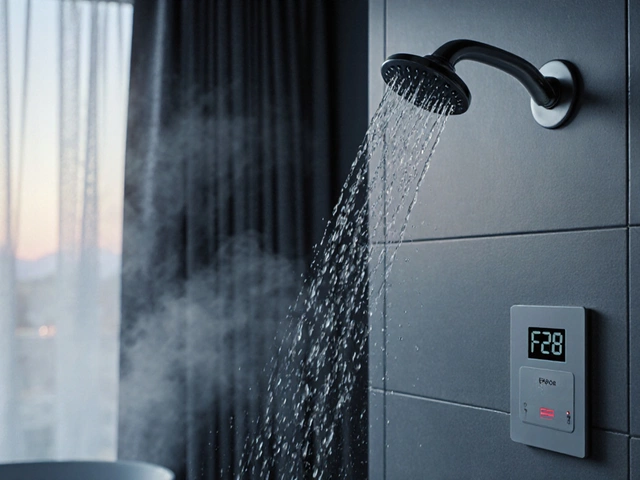Ever thought about the air quality in your kitchen or bathroom? It's probably not top of mind, but that's where extractor fans come in! These nifty gizmos work hard, zapping away steam and funky odors before they settle like unwanted guests in your space.
You might be wondering if they're truly necessary. Well, if you've cooked a big pot of spaghetti or had a hot shower, you've created moisture that could lead to mold if left unchecked. That's when a solid extractor fan proves its worth, acting like the unsung hero of home maintenance.
But what happens when it stops working? It's easy to panic, but many issues are fixable with some basic know-how. From noisy operations to complete power failures, understanding common problems can help you navigate repairs without a hitch.
Before you jump to conclusions, there are clear signs it might be time for a fix. Unusual noises, odd smells, or ineffective function are all waving red flags. Thankfully, regular maintenance can thwart many of these nuisances, keeping your fan—and your air—fresh and clean.
- Why Extractor Fans Matter
- Common Issues and Fixes
- Signs You Need a Repair
- Maintaining Your Extractor Fan
Why Extractor Fans Matter
Extractor fans are like the silent warriors of home upkeep. Their job? Keeping your kitchen ventilation in check and preventing all kinds of headaches. When you're cooking up a storm, it's not just the scents of your culinary creation that linger. Moisture, steam, and grease can build up, damaging surfaces and encouraging mold to set up camp.
Still not sold on their relevance? Think about your bathroom after someone takes a long, hot shower. Without an extractor fan, all that steam has no place to go, leading to potential mildew, peeling paint, and even warped wood fixtures over time. These fans whisk away the excess moisture, protecting both your health and your home's structure.
Reducing Indoor Air Pollution
It's not just about moisture, though. High levels of stale air and pollutants can cause more than a stuffy nose. The EPA has raised concerns about indoor air quality, highlighting the importance of proper ventilation. A properly functioning extractor fan can help reduce the risk of respiratory issues by improving air circulation.
Choosing the Right Extractor Fan
Before you rush to grab any fan off the shelf, it's crucial to pick the right type for your space. Fans are rated by their extraction rate, usually measured in cubic feet per minute (CFM). The general rule of thumb is that your extractor fan should replace the air 15 times per hour for a well-ventilated room.
- For a small bathroom, you might need a fan with about 50 CFM.
- Your typical kitchen may require a fan between 100-400 CFM.
- A professional kitchen setting? You’ll be looking at much higher requirements.
Remember, an extractor fan isn't a set-it-and-forget-it gadget. Regular cleaning and maintenance ensure it stays in top shape, ready to tackle whatever you cook up next.
Common Issues and Fixes
Okay, let's get into the nitty-gritty of extractor fan troubles! It's not unusual for these handy devices to hit a few bumps along the road. Here’s a breakdown of some typical issues and how you can tackle them head-on.
Noisy Fan
If your fan is louder than a rock concert, something's off. Kitchen ventilation should be more soothing than chaotic, right? Most times, noise comes from loose parts or debris caught in the fan blades.
- Solution 1: Tighten any loose screws and fittings. Sometimes a quick turn of a screwdriver is all you need!
- Solution 2: Give the blades a once-over check for any obstructions and clear them out.
Slow or Non-Functioning Fan
Nobody wants a sluggish fan in their home. A common culprit is a buildup of grime stopping the blades from spinning as they should.
- Step 1: Safely switch off the power to avoid any surprises.
- Step 2: Clean the blades gently with a damp cloth and some mild detergent, just like doing the dishes.
Electrical Issues
Got an extractor fan that won’t even turn on? Before you throw it out the window, try a few checks.
- Check the fuse in the plug – sometimes it’s the smallest things!
- Verify the main power supply to ensure there are no tripped switches or blown fuses in your circuit.
Inadequate Ventilation
If the fan looks like it's working but things still seem fogged up, it could be a venting problem.
- Solution 1: Inspect the vent pipe for blockages or disconnections. It should be as clear as a road on a Sunday morning.
- Solution 2: Ensure your fan is the right size for the room. Too small and it can't handle the job.
Fixing these fan repair issues at home can not only save you money but also extend the life of the appliance. Remember, keeping things shipshape will stop these problems from creeping up unexpectedly.
| Common Issue | Quick Fix |
|---|---|
| Noisy Fan | Tighten screws, clean blades |
| Non-Functioning | Clean blades, check power |
| Electrical Issues | Check fuse, power supply |
| Poor Ventilation | Check vent pipe, match fan size |

Signs You Need a Repair
Extractor fans, like anything else, can start showing signs they're not in the best shape. Knowing what to look for can save you time and money before things spiral into a bigger issue.
1. Unusual Noises
Is your extractor fan sounding like a jet engine instead of a gentle breeze? That's not normal. Rattling or grinding noises can mean parts are loose or worn out. When you hear odd sounds, it's a sure sign something's up.
2. Ineffective Odor and Moisture Removal
If your kitchen or bathroom still smells like last night's dinner or is drenched in steam even after the fan's been running, it might not be pulling its weight. This is especially concerning in the kitchen, where lingering moisture can lead to mold.
"A functioning extractor fan is essential to reducing airborne moisture and maintaining air quality," says Jane Doe, indoor air expert at HomeQuality Inc.
3. Strange Smells
Ever catch a whiff of something burning or electrical coming from the fan? That's more than just off-putting; it could be a sign of motor issues or wiring problems. These smells are best not ignored, as they can lead to more serious problems.
4. Poor Airflow
Fan squealing and weak airflow are signs that dust or grease could be clogging up the blades. Cleaning these on your own could help, but if you see no improvement, the fan might need professional attention.
5. Fan Won't Start
If your fan just refuses to turn on, there might be an issue with the electrical supply or the unit's switch. Double-check your circuit, but if everything seems fine, a faulty connection could be the culprit.
Keep an eye out for these warning signs. Nip issues in the bud and save yourself from bigger headaches down the road. Regular maintenance and sometimes just a little TLC can do wonders in avoiding unexpected breakdowns.
Maintaining Your Extractor Fan
So, you've got an extractor fan working to keep your space fresh and airy. Great! But just like any other appliance, it needs a little TLC to run smoothly. Regular maintenance can extend its life and optimize performance.
Regular Cleaning
One of the simplest ways to keep your extractor fan in tip-top shape is by regular cleaning. Every month or so, give it a wipe-down. Be sure to:
- Turn off the power to ensure safety.
- Remove and wash any removable filters in warm, soapy water.
- Clean the fan blades and surrounding areas with a damp cloth.
This helps prevent buildup that could slow your fan down and makes sure it's pulling away all that pesky moisture effectively.
Annual Check-ups
Once a year, it's worth doing a more thorough check to make sure everything's running as it should. This is especially important if you notice your fan's performance dropping. Check for:
- Noisy operations—loose screws or worn out parts could be to blame here.
- Inefficient extraction—clogs in the duct could block the airflow.
If these are outside your comfort zone, consider calling a pro.
Replacing Parts
Over time, some parts like filters and fan belts might need replacing. Luckily, many are designed for easy swaps:
- Buy parts that match your fan model.
- Use the manual for guidance or look for online tutorials.
- Replace worn parts carefully to ensure a snug fit.
Energy Efficiency Tips
Sometimes it's all about making your fan work smarter, not harder. Pay attention to these tips:
- Install a timer to avoid leaving it running longer than needed.
- Upgrade to a more efficient model if yours is over a decade old.
By doing these things, you'll keep your extractor fan humming along and your home environment pleasant.





